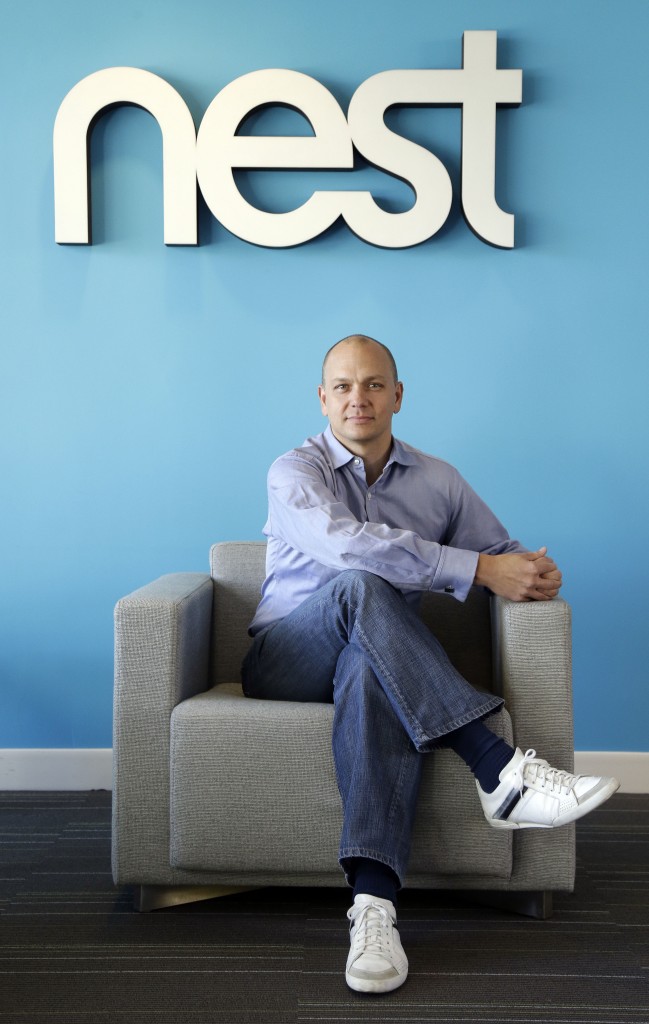Google’s futuristic Glass program is about to get refocused.
The pioneering if pricey $1,500 wearable computer — which debuted in 2012 to a select group of Glass Explorers who at times found themselves derided for their cyborg-like appearance — is shifting from the Google(X) incubator program to a stand-alone division within the search engine behemoth, the company announced Thursday.
Google said development of Glass would continue, with no particular timetable as to when a revamped model might debut. That means for the moment no new Glasses will make their way to users. But while mum on its plans, handing the reins to a man who helped develop an iconic smartphone and revamped staid devices such as the thermostat would seem to indicate Google is intent on making Glass a populist tech hit.
Overseeing Glass 2.0 will be Tony Fadell, best known for his integral role in the creation of Apple’s iPod and iPhone as well as the creator of the Nest line of intuitive thermostats and smoke detectors. Fadell joined Google a year ago when Google purchased Nest for $3.2 billion. Last June, Google hired fashion marketing maven Ivy Ross to run Glass; she will report to Fadell, but Glass will not fall under the Nest umbrella, according to a company statement. Neither Fadell nor Ross were made available for comment.
While Glass may still seem like a cultural oddity — one that coined the derisive term “glassholes” of its wearers — 43% of consumers have interest in the product, “but 50% also have privacy concerns,” says J.P. Gownder of Forrester Research. “So Google needs to construct a consumer image for the product and deal with those privacy concerns if they want it to be mass market.”
One of the repercussions of the shift is the shuttering of the Glass Explorer program, which for more than two years helped Google gather information from a carefully selected group that wrote short essays on why they wanted to buy Glass. The more innovative and novel uses of Glass ranged from helping the handicapped share images of their world to allowing firemen faster access to neighborhood hydrants.
“I’ve been running start-ups for 20 years, and I’ve never seen this rapid an adoption for enterprise use,” says Jon Fisher, CEO of CrowdOptic, which develops algorithms that allows Glass to live-stream from inside a hospital surgery room or a sports stadium.“If there’s been a weakness (with Glass), it’s only been in dealing with the vicious consumer cycle. Eventually though, this will shift from being an enterprise device to something people will want to wear in public.”
[one_fourth]
[/one_fourth][three_fourth_last]
With the right easy-to-use applications, Glass could make its move into the wearable marketplace as a force, says Phil Lipin, CEO of Evernote.
“There’s more than a year left before it’s really mainstream, (but) I’m a big believer in it long-term,” says Lipin. He says that sending critical information directly into a user’s field of vision will be a big game-changer, even if at first one’s interaction with the product will have to become second nature.
“It needs to stop being awkward before it can become mainstream,” he says. “You can look cool with anything on your head as long as it looks like, yeah, that’s meant to be there.”
On Glass’s Google+ page, the company wrote:
“It’s hard to believe that Glass started as little more than a scuba mask attached to a laptop. We kept on it, and when it started to come together, we began the Glass Explorer Program as a kind of ‘open beta’ to hear what people had to say.
Explorers, we asked you to be pioneers, and you took what we started and went further than we ever could have dreamed: from the large hadron collider at CERN, to the hospital operating table; the grass of your backyard to the courts of Wimbledon; in fire stations, recording studios, kitchens, mountain tops and more.
Glass was in its infancy, and you took those very first steps and taught us how to walk. Well, we still have some work to do, but now we’re ready to put on our big kid shoes and learn how to run.”








